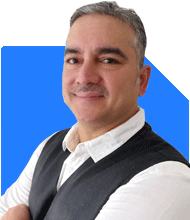Col Sanjeev Govila, good evening. I am Col P Venkatachalam, retd from MCEME as HOD FIET in 2006. I want to invest Rs 10 lacs. Please advise me.
Ans: Your disciplined decision to invest Rs 10 lakhs is deeply respected. Let's carefully assess the options for you.
This response is structured for your complete understanding and peace of mind.
We’ll explore all angles: safety, growth, liquidity, and suitability for your life stage.
Let’s proceed step-by-step.
Understanding Your Needs First
Before investing, it's important to check a few things:
Do you need regular income from this amount?
Do you want to keep this money safe from loss?
Or, are you looking for long-term growth for legacy or future use?
Are you okay with some ups and downs in value for better returns?
Once your objective is clear, investment selection becomes easier and more purposeful.
If Your Priority Is Capital Safety with Some Growth
You may want to protect your money and still grow it better than FDs.
These types of investments are suitable for short-term or medium-term use.
You may explore actively managed short-duration debt mutual funds.
These funds give better returns than bank FDs in most cases.
Returns are not fixed but are usually in the range of 6% to 7.5% per year.
They also offer better tax efficiency compared to bank FDs.
You can redeem partially anytime if you need money.
These funds are managed by experts and reviewed regularly.
If Your Priority Is Monthly Income
If you want steady cash flows, you can consider this route.
Keep 6 to 12 months of expenses in a liquid fund.
Use the rest in a Systematic Withdrawal Plan (SWP) from a balanced hybrid fund.
SWP gives regular cash flow without touching your capital much.
You also get better post-tax returns than bank interest.
You can increase or stop SWP anytime you want.
If Your Priority Is Long-Term Wealth Creation
If you don’t need this money for at least 5 to 7 years, then growth becomes key.
You can consider investing in an actively managed equity mutual fund.
Your capital grows over the long term with the power of compounding.
You have already seen 5x growth in past equity investments.
That patience has rewarded you. Same can happen here.
Select only regular plans of equity funds through MFDs with CFP credentials.
Don’t choose direct plans as they give no guidance and no service.
Avoid index funds. They follow market blindly. They don’t manage risks well.
Actively managed funds perform better in changing market conditions.
Why Not Index Funds or Direct Plans
Many suggest index funds or direct mutual funds without understanding your life stage.
Index funds copy an index. No human checks or risk control.
During market falls, they fall just like the market. No safety layer.
They may not suit senior citizens looking for safer growth.
Also, direct plans have no support.
A Certified Financial Planner and MFD will guide and update you regularly.
They also ensure rebalancing and switching at the right time.
What to Avoid at This Stage
Don’t go for market-linked insurance plans like ULIPs or combo policies.
Don’t keep Rs 10 lakh idle in a savings account or low-interest FD.
Don’t lock the entire amount in long-term non-liquid products.
Don’t invest in real estate for rental income. It’s illiquid and stressful.
Tax Aspects to Keep in Mind
If you redeem your equity fund after 1 year, capital gains above Rs 1.25 lakh are taxed at 12.5%.
For debt funds, gains are taxed as per your income slab.
SWP from equity funds is treated as capital gains. So, tax is lower.
You can plan redemptions smartly to keep tax low.
Avoid dividend payout plans in equity funds. They deduct tax before payout.
Instead, choose growth option and withdraw through SWP. That’s tax-friendly.
Sample Allocation for Rs 10 Lakh Based on Your Profile
This is a balanced idea assuming you don’t need regular income.
Rs 2 lakh in liquid fund – for emergency or unexpected needs
Rs 3 lakh in short-duration debt fund – for medium-term use
Rs 5 lakh in actively managed large and mid-cap equity mutual fund – for long-term growth
If you need monthly income, then replace Rs 5 lakh equity with a balanced fund and start SWP.
This will give you regular income with capital protection.
Flexibility and Liquidity
All these options offer full liquidity. You can withdraw anytime.
No fixed lock-in like insurance or annuities.
You stay in control of your money.
You also avoid penalty or surrender loss.
Review and Adjust Every Year
Check the performance every year with a Certified Financial Planner.
Rebalance between equity and debt based on your age and goals.
Make sure you are not taking more risk than needed.
If markets have performed well, book some profit and move to safer options.
If You Already Have Any LIC, ULIP, or Combo Plans
If any LIC or ULIP policies exist, kindly check surrender value.
If they are giving poor return, consider surrendering and reinvest in mutual funds.
Many old plans give less than 5% return.
Mutual funds offer more transparency and liquidity.
Make sure to shift wisely and not impulsively.
You Have Already Done Well
You are retired and still planning ahead. That is very admirable.
You also understand that income from equity mutual funds is not guaranteed.
Your discipline in sticking with equity for long term is wise.
It’s rare to see 5 times growth. You must have chosen well and held strong.
Finally
Based on your need, risk comfort, and goal, we can mix liquid, debt, and equity.
Avoid products which lock your capital or give poor return.
Prefer actively managed mutual funds with guidance.
Avoid index funds, direct plans, and fixed-return insurance schemes.
Keep part of your money flexible for any future need.
Ensure that your capital works hard but remains under your full control.
Periodic review with a trusted Certified Financial Planner is a must.
Best Regards,
K. Ramalingam, MBA, CFP,
Chief Financial Planner,
www.holisticinvestment.in
https://www.youtube.com/@HolisticInvestment






























